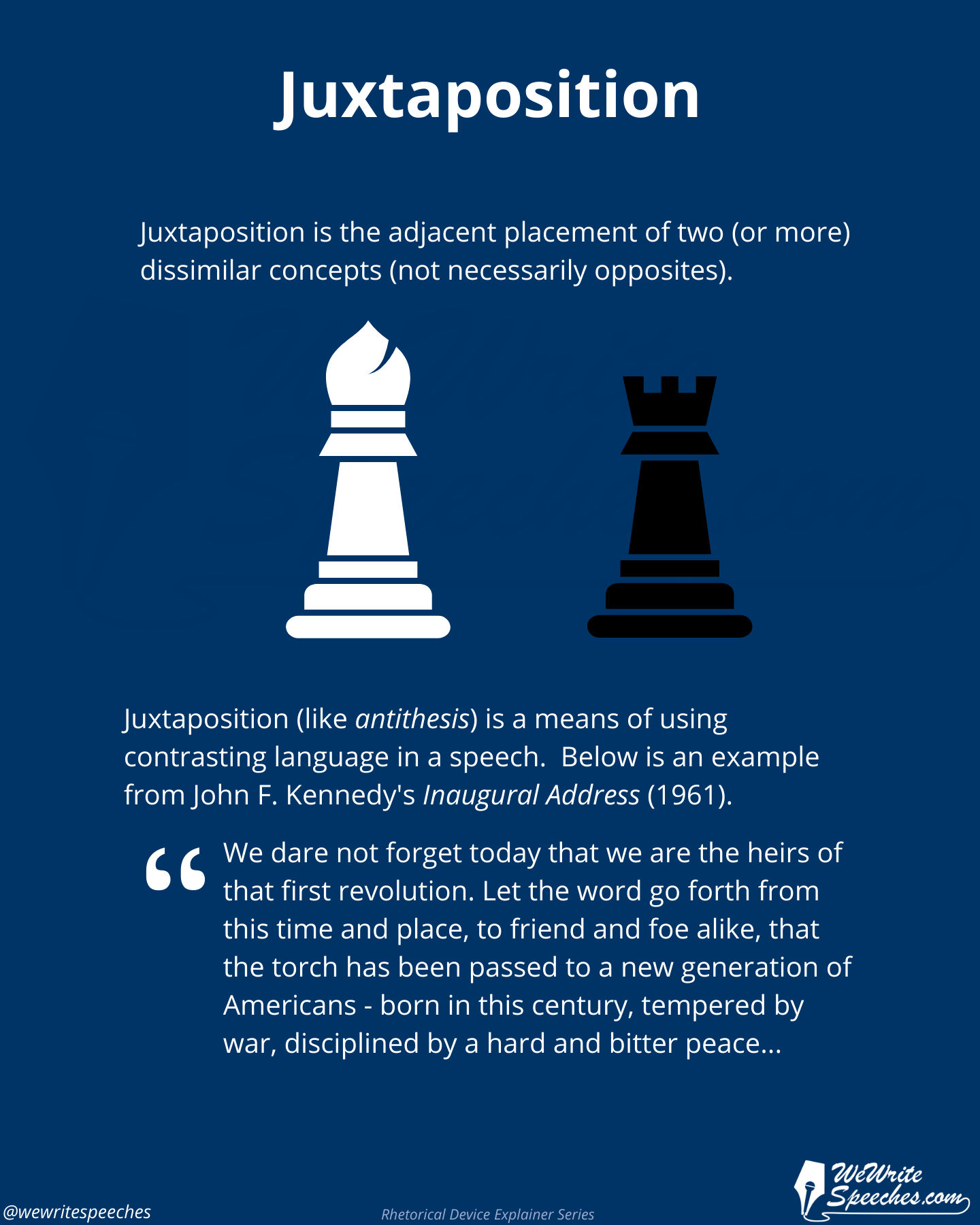Rhetorical Device: Juxtaposition
Juxtaposition involves placing two or more ideas or concepts side by side for the purpose of comparison or contrast. The concepts are usually set up in a way that draws attention to the contrasts or similarities between them. The things being compared are not usually opposites - that would be another rhetorical device called antithesis (see below).
Examples
To renew America, we must be bold.
We must do what no generation has had to do before. We must invest more in our own people, in their jobs, in their future, and at the same time cut our massive debt. And we must do so in a world in which we must compete for every opportunity.
It will not be easy; it will require sacrifice. But it can be done, and done fairly, not choosing sacrifice for its own sake, but for our own sake. We must provide for our nation the way a family provides for its children. Bill Clinton, "First Inaugural Address" (21 January 1993)
This year's space budget is three times what it was in January 1961, and it is greater than the space budget of the previous eight years combined. That budget now stands at 5 billion-400 million dollars a year -- a staggering sum, though somewhat less than we pay for cigarettes and cigars every year.John F. Kennedy, "Address at Rice University on the Nation's Space Program" (12 September 1962)

Juxtaposition vs Antithesis
Juxtaposition is different from antithesis, in that juxtaposition involves setting two or more ideas side by side in order to emphasize their similarities or differences whereas antithesis involves setting two ideas in opposition to one another (i.e. they are opposites in some way). Here is an example where Churchill used three animal comparisons, to clarify his ideas of the role of private business in the economy.
Some Socialists see private enterprise as a tiger—a predatory animal to be shot. Others see it as an old cow to be milked. But we Conservatives see it as a sturdy horse that pulls along our economy.Winston Churchill, "A Sturdy Horse" (1959)
Antithesis is more likely to use a parallel structure than is juxtaposition. However juxtaposition can use parallelism too. The following example contains an example of juxtaposition followed by two examples of antithesis, all arranged in parallel structures (hover over the highlights for more details):
You have many, many important choices ahead of you:
- Where to live?
- Which jobs to take?
- Whether to get married — and to whom?
- Whether to have children — and how many?
But none of those choices will have as much bearing on your decency as a human being and on your happiness — your fundamental, enduring happiness — as a choice that you will make monthly, daily, even hourly.
And that’s whether you’re going to besomebody who counts her blessings . . . or somebody who tallies her slights. 'Blessings' is not exactly the opposite of 'slights' so this must be considered as juxtaposition rather than antithesis
Do you take humble stock of the good luck in your life? Or do you take angry inventory of the bad? 'Good' and 'bad' are direct opposites so this is an example of antithesis. Learn more.
Do you savor your strengths — or stew about your weaknesses? 'Strengths' and 'weaknesses' are opposites so this is an example of antithesis. Learn more.Frank Bruni, "Commencement Address, University of North Carolina" (8 May 2022)
